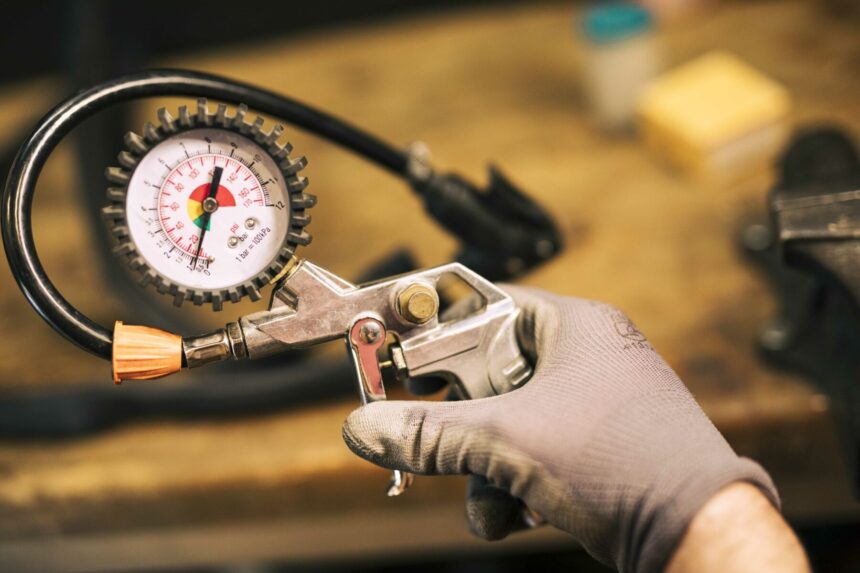For enthusiasts who are passionate about their four-wheel drive vehicles, understanding the myriad of components that keep these machines running smoothly is paramount. One critical instrument, often overlooked, is the oil pressure gauge. This seemingly modest device plays a significant role in maintaining the health and longevity of your 4WD’s engine. In this article, we will delve into the importance of the oil pressure gauge, its functions, and why it is essential for any 4WD driver.
Understanding the Role of Oil in Your 4WD’s Engine
Oil serves as the lifeblood of any engine, ensuring every moving part operates without excessive friction and overheating. In a 4WD, where engines are often pushed to their limits, maintaining proper oil circulation and pressure is even more critical. It acts as a lubricant, coolant, and cleaner – encapsulating particles and moving them to the filter, preventing a buildup that can lead to engine damage.
What is an Oil Pressure Gauge?
An oil pressure gauge is an instrument designed to alert the driver of the current oil pressure within the engine’s lubrication system. It checks the pressure at which the oil is being pumped around the engine, ensuring it is within a safe and effective range. A gauge reading that is too low could indicate insufficient lubrication, while a reading too high might signal a clog or a fault in the oil delivery system.
Why is Monitoring Oil Pressure Essential?
Without adequate pressure, oil cannot reach every necessary component of the engine, leading to increased wear and tear, overheating, and eventually, engine failure. Monitoring oil pressure allows for the quick identification of issues such as leaks, filter blockages, or a failing oil pump, which might otherwise go unnoticed until they cause significant damage.
The Hallmarks of a Reliable Oil Pressure Gauge
A reliable oil pressure gauge should provide accurate and consistent readings, be resistant to vibration and engine heat, and have a clear display that is easily read at a glance. More sophisticated gauges may come equipped with warning lights or alarms to draw immediate attention to a drop in pressure, allowing drivers to shut off the engine before damage occurs.
Installation and Maintenance of an Oil Pressure Gauge
Installing an oil pressure gauge can be a straightforward process, particularly with kits that include all necessary hardware and instructions. Regular maintenance includes checking for accuracy, ensuring connections are tight and free of corrosion, and replacing the gauge if it becomes damaged or difficult to read.
DIY vs Professional Installation
While some 4WD enthusiasts may opt for DIY installation, others might prefer professional help to ensure accuracy and safety. A professional will ensure the gauge is integrated properly within the vehicle’s systems, providing peace of mind for the driver.
Signs of Oil Pressure Issues in Your 4WD
Common signs of oil pressure issues include the gauge showing extremely high or low pressure, fluctuations in reading, or an oil warning light illuminating on the dashboard. Any of these signs should prompt immediate attention to prevent possible engine damage.
Immediate Actions During An Oil Pressure Warning
If the oil pressure gauge indicates a sudden drop in pressure or a warning light comes on, it is advisable to stop the vehicle as soon as safely possible. Continuing to drive could exacerbate the issue, turning a potentially minor repair into a major engine overhaul.
Troubleshooting Oil Pressure Gauge Problems
When troubleshooting, it’s important to check if the gauge itself is malfunctioning or if the pressure issue lies within the engine’s oil system. It often involves inspecting the sending unit, electrical connections, and the oil level and condition. If troubleshooting doesn’t reveal a problem with the gauge or connections, a professional evaluation of the engine’s oil system may be necessary.
Upgrading Your 4WD’s Oil Pressure Gauge
Upgrading an existing oil pressure gauge or adding one to a 4WD that doesn’t have it should be considered essential. A higher-quality gauge will provide more precise readings and may feature additional protections, such as built-in alarms.
Considering the Conditions
4WD vehicles often face extreme conditions not encountered by standard road cars. As such, ensuring the durability and accuracy of your oil pressure gauge under such conditions is essential to prevent false readings that could either cause panic or understate a serious issue.
Conclusion: Your 4WD’s Health Dependent on Vigilance
Regular checks, a quality oil pressure gauge, and an understanding of your vehicle’s normal operating parameters are indispensable for 4WD enthusiasts. Ensuring that your oil pressure stays within the recommended range is equivalent to keeping a close eye on the vital signs of your engine, which can mean the difference between a safe journey and being stranded off-road. Investing in reliable gauges and understanding the signs of oil pressure issues ensures that your 4WD vehicle remains healthy, capable, and ready for adventure.
Keeping the Engine’s Heart Beating Strong
In conclusion, the oil pressure gauge is not merely an accessory but a critical component of your vehicle’s diagnostic system. Like a doctor monitoring a patient’s vital signs, a driver must be attuned to their vehicle’s condition. Regular maintenance, accurate gauges, and proactive responses to pressure issues can keep any 4WD’s engine robust and responsive, even in the most demanding environments, preserving its longevity for countless journeys ahead.


